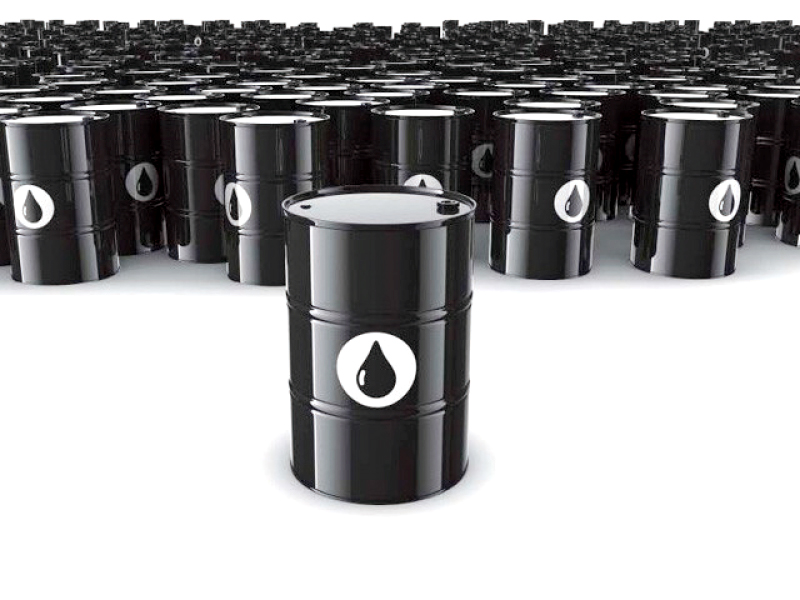
Pakistan has resumed export of crude oil after a gap of 10 years as output touched an all-time high of 98,000 barrels per day (bpd) in June 2014, an increase of 22% over the previous year, officials said.
Around 70,518 tons of ultra-light crude oil – known as condensate – has been exported in the last two months, according to the Pakistan Bureau of Statistics (PBS). The export value is stated at $60.7 million (Rs5.9 billion).
“At least one ship of 32,000-ton capacity is leaving the port every month,” said an industry official. “We expect exports to rise because the output of condensate has gradually increased over the years.”

The petroleum crude is coming from different fields in Sindh and Khyber-Pakhtunkhwa. Three multinational firms, United Energy Pakistan, which took over the assets of BP in the country, OMV and MOL are mostly involved in the exports.
Pakistan State Oil (PSO) has allocated two 55,000 capacity tanks to two of the multinational companies for storing condensate before the shipments are made, said an official.
“These companies want to sign three-year contracts with PSO for using the tanks, indicating their long-term intention to keep the exports going.”
Export of crude started after the discovery of the Badin Gas field along with the by-produce condensate in the 1990s. The refineries initially didn’t have the capability to process the condensate but when Attock and Pak Arab refineries started consuming most of the domestic supply, government restricted exports in 2004.
The average oil production in Pakistan jumped 13% to 86,000 bpd in fiscal year 2013-14 compared to the previous year. The oil output even reached an all-time high of 98,000 bpd by the end of June 2014.
Around 60,000-65,000 bpd of oil is consumed by local refineries, leaving a surplus of 24,000-25,000 bpd for export, said the officials.
A major chunk of the increase in oil output came from the Tal block, which saw average oil production rise 63% to 17,000 bpd. The block contributes 20% of the total oil produced in Pakistan.

Industry officials believe that Pakistan’s crude oil output is expected to increase to 130,000 bpd in a year or two, a sharp rise from the stagnant 66,000 bpd seen previously.
While there remains uncertainty over the exact size of oil reserves in the absence of any broad geological survey, Pakistan has estimated recoverable reserves at 27 million barrels.
The petroleum industry generally believes Pakistan’s geology is gas-prone rather than having any substantial oil potential.
Increase in oil output is coming in shape of condensate and other light crudes, which are hard to process in local hydro-skimming refineries, officials say.
Local light crude also gives a better yield of petroleum products as Attock Refinery, which relies on domestic supply, produces 20-22% of furnace oil against other refineries that have a furnace oil composition of 30-35%.
Published in The Express Tribune, August 24th, 2014.
Like Business on Facebook, follow @TribuneBiz on Twitter to stay informed and join in the conversation.
COMMENTS (12)
Comments are moderated and generally will be posted if they are on-topic and not abusive.
For more information, please see our Comments FAQ










































@Asad...You are interfering in our Kashmir , North East and you get pinched about some true comments. Hypo critics.
@FF: Good Insight Indeed!
The article is missing information for the obvious question -
What are the destination countries that are consuming this export?
@All: The reason for exporting is only because refineries here are not capable of refining the ultra-light crude 'condensate'. They are designed to process Arabian light crude which they usually import to fulfill local demands. However, condensate is a fraction of overall hydrocarbon production in all three companies. They mainly produce crude oil and natural gas.
Instead of exporting this, refineries should be encouraged to process this in Pakistan to reduce the import.
There is something missing in this report and that is why it is appearing absurd. The total refining capacity of Pakistani refineries is 450 kBPD (including Byco Oil Refinery) and which is almost very close to the local consumption requirement. Pakistan produces 80 - 100 kBPD of crude oil and the rest crude oil is imported for refining and local consumption. How could Pakistan export crude oil????????? Export is always of surplus capacity or production. If Pakistan does not have surplus production / capacity, how could Pakistan export. I think that it could be some by-product of oil refining which is acceptable as Pakistan is exporting Grease, Charcol and Naphtha for very long.
@Wali : Pakistan have only handful of Refinery . So the crude oil which dey can't consume have to be exported .
@indian.. why do you care exactly.. why can you just not stop commenting on every article on our websites ? what is so attractive here ? or does your country not have news websites ?
E.T. please publish.
Maybe the context of the news should also be explained... Why is Pakistan exporting tiny fraction of the crude that it imports and alsohas refining capacity?
We produce more den 3,50,000 Bpd and dats even high quality ... Even den we can't export . So , simple question what is consumption rate in Pakistan of Petrolum Products ?
Exporting crude oil to import refined petroleum product, I wonder who is running the show!!
Allah o Akbar,
Pakistan need to export processed fuel instead of crude to increase profit margin and create jobs for Pakistanis (better paying jobs).
May Allah bless Pakistan and Pakistanis / Muslims